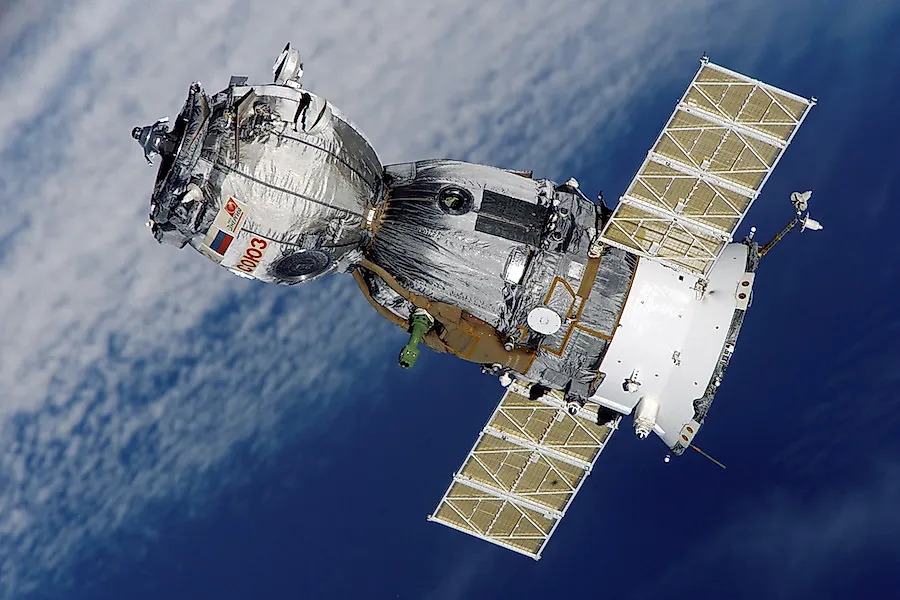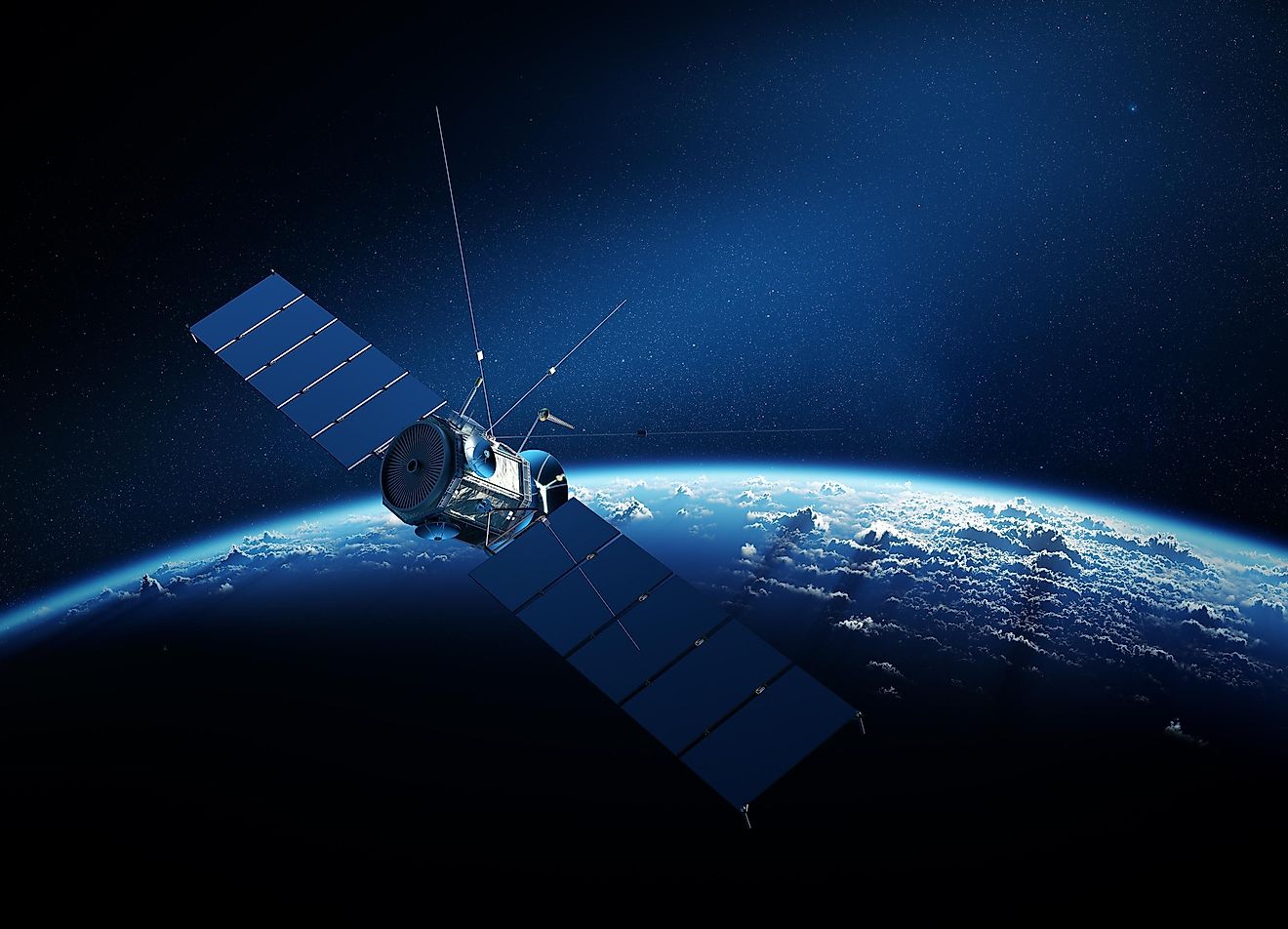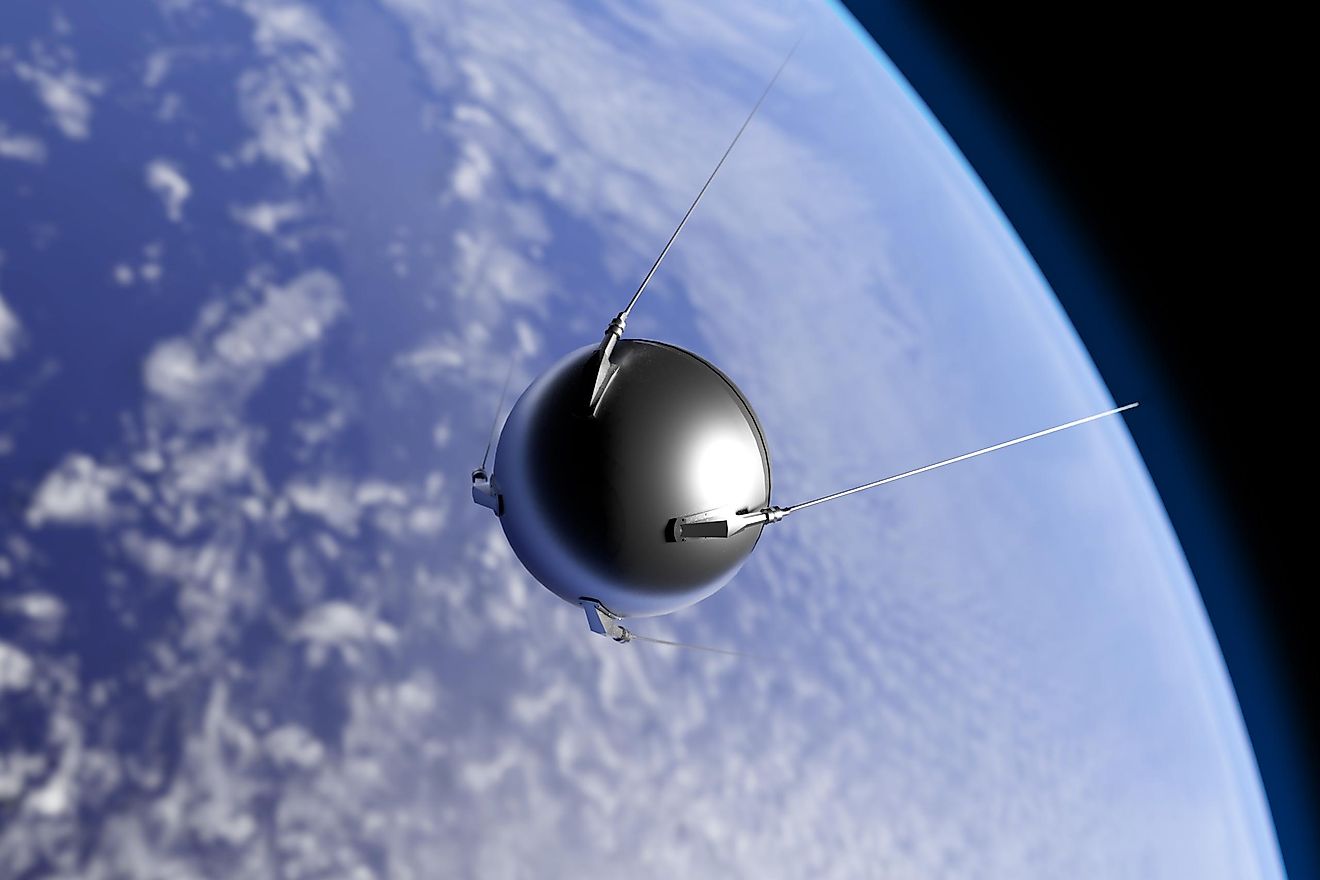How Many Types Of Satellites Are There?

A satellite is a human-made object which has been deliberately stationed into orbit. The human-made objects are also known as artificial satellites which differentiate them from natural satellites such as the Moon. Different satellites are classified by the functions they perform. Satellites are launched into space to perform a particular task, and therefore, it must be designed specifically to fulfill the desired function.
13. Weather Satellites

Weather satellites, also known as meteorological satellites, are predominantly used to monitor and record the Earth's climate and weather. The satellites are a consistent source of up-to-date information about atmospheric conditions. Weather satellites are capable of seeing more than just that cloud systems including sand and dust storms, auroras, city lights, snow cover, energy flows, fires, ice mapping, effects of pollution, and ocean currents among others. Meteorological satellites also help monitor volcanic activity on specific mountains and can detect changes in the earth's ice field, sea state, vegetation and ocean color. The first successful weather satellite Tiros 1 was launched on April 1st, 1960 by NASA. The satellite broadcasted infrared television pictures of the earth's cloud cover and even detected the development of hurricanes and meteorologists were able to chart their paths.
12. Tether Satellites
Tether satellites are satellites that are connected by a thin cable known as a tether to another satellite. Tether satellites are mainly used for altitude control, stabilization, propulsion, maintaining relative positions of a larger spacecraft sensor system, and momentum exchange. There are different types of tether satellites including skyhooks, format flying tethers, Momentum exchange tethers, and electrodynamic tethers. Satellite tethers tend to be relatively cheaper than spacecraft using rocket engines depending on the objective of the mission and altitude.
11. Space Stations
A space station is a rocket ship designed to support crew members. It hovers in space over a long period in order for other spacecraft to Harbor. A space station is differentiated from other spacecraft with passengers aboard by the lack of superior landing systems and spacecraft propulsion. The earth's orbit has three space stations as of September 2016 namely: China's Tiangong-2, Tiangong-1, and the International Space Station.
10. Recovery Satellites
Recovery satellites are also known as space capsules. They provide the recovery of biological, reconnaissance, space production and other consignments from space and the Earth's orbit. Most recovery satellites are manned as they are fully operational. This includes Mercury and Vostok and later Soyuz, Shenzhou, L3, Gemini, TKS, Apollo Command Module among others. A recovery satellite is required to have all the things necessary for everyday life including water, food, and air and must protect the astronauts from radiation and frigid space weather.
9. Reconnaissance Satellites
Reconnaissance satellites are satellites designed to observe the Earth for military purposes. Such satellites comprise of infrared sensors that trace missiles launched and electronic sensors that eavesdrop on confidential conversations amongst other acts of military surveillance. Most of the information on reconnaissance satellites is classified since it is a military operative. A reconnaissance satellite might also be referred to as spy satellite.
8. Miniaturized Satellites
Miniaturized satellites are small satellites usually of low mass and a weight lighter than 1100 lb. Miniature satellites are also known as "smallsats" or "small satellites". The primary objective of creating miniature satellites is to reduce the costs, as bigger satellites require huge rockets with greater thrust and are expensive to maintain. Tiny satellites are lighter because of their size, and several of them can be launched.
7. Crewed Spacecraft (spaceships)

A crewed spacecraft, also known as manned spaceflight or human spaceflight, is a satellite with human passengers on board. Crewed spacecraft are either operated remotely from ground stations located on Earth or directly by the human crew. On April 21, 1961 the Vostok manned by cosmonaut Yuri Gagarin became first manned spaceflight to orbit the earth. The International Space Station is a manned spacecraft has continuously been present in space for 16 years.
6. Killer Satellites
Killer satellites are satellites primarily designed to destroy warheads from enemy countries, satellites and other outer space objects that pose a danger to life on earth. The first killer satellite was declared operational in 1973 following a series of failed attempts.
5. Navigational Satellite
Navigational satellites are primarily designed to help vessels, aircraft, and vehicle operators determine their geographical location. Originally navigational satellites were created so that nuclear submarines could successfully navigate waters during inertia. Navigation satellites allow small electronic receivers to determine elevation, latitude, altitude, and longitudinal locations to high accuracy. The first navigation satellite was declared operational in 1962 after Transit 5A was launched. Due to certain inherent limitations, there was a sudden instigation in the development of more advanced navigational satellites.
4. Earth Observation Satellites

Earth observation satellites are satellites primarily designed to observe planet Earth from orbit. Earth observation satellites are similar to reconnaissance satellites. However, they are not intended for military purposes but map making, meteorology, and environmental monitoring. A good number of earth observation satellites contain devices that should be controlled in relatively low altitudes. Examples of earth observation satellites include; DubaiSat-1, MetOp, UEMETSAT, ERS-1, E visit among others.
3. Communication Satellites

Communication satellites are human-made satellites that transmit and amplify radio telecommunications signals through transponders. A communication satellite acts as a communication channel between the transmitter and the receiver based on different locations on Earth. Such satellites are used for radio, television, military, internet, and telephone applications. The Earth's orbit has about 2,000 communication satellites that are used by government and private organizations. The first artificial communication satellite was launched on October 4, 1957. It was known as Sputnik 1 and operated by the Soviet Union.
2. Biosatellites
Biosatellites are satellites primarily designed to carry life into space. The first three Biosatellites were launched by NASA between 1966 and 1969 and carried fruit flies, wheat seedlings, frog eggs, bacteria and a monkey. On November 3, 1957 Sputnik 2 became the first satellite to carry an animal in space, a dog named Laika.
1. Astronomical Satellites
Astronomical satellites are satellites used for the observation of distant planets and galaxies including other outer space objects. Astronomical satellites are also known as space telescopes or space observatory. The first two operational astronomical satellites were the American Orbiting Astronomical Observatory OAO-2 and the Soviet Union's Orion 1 ultraviolet telescope launched in 1968 and 1971 respectively.











